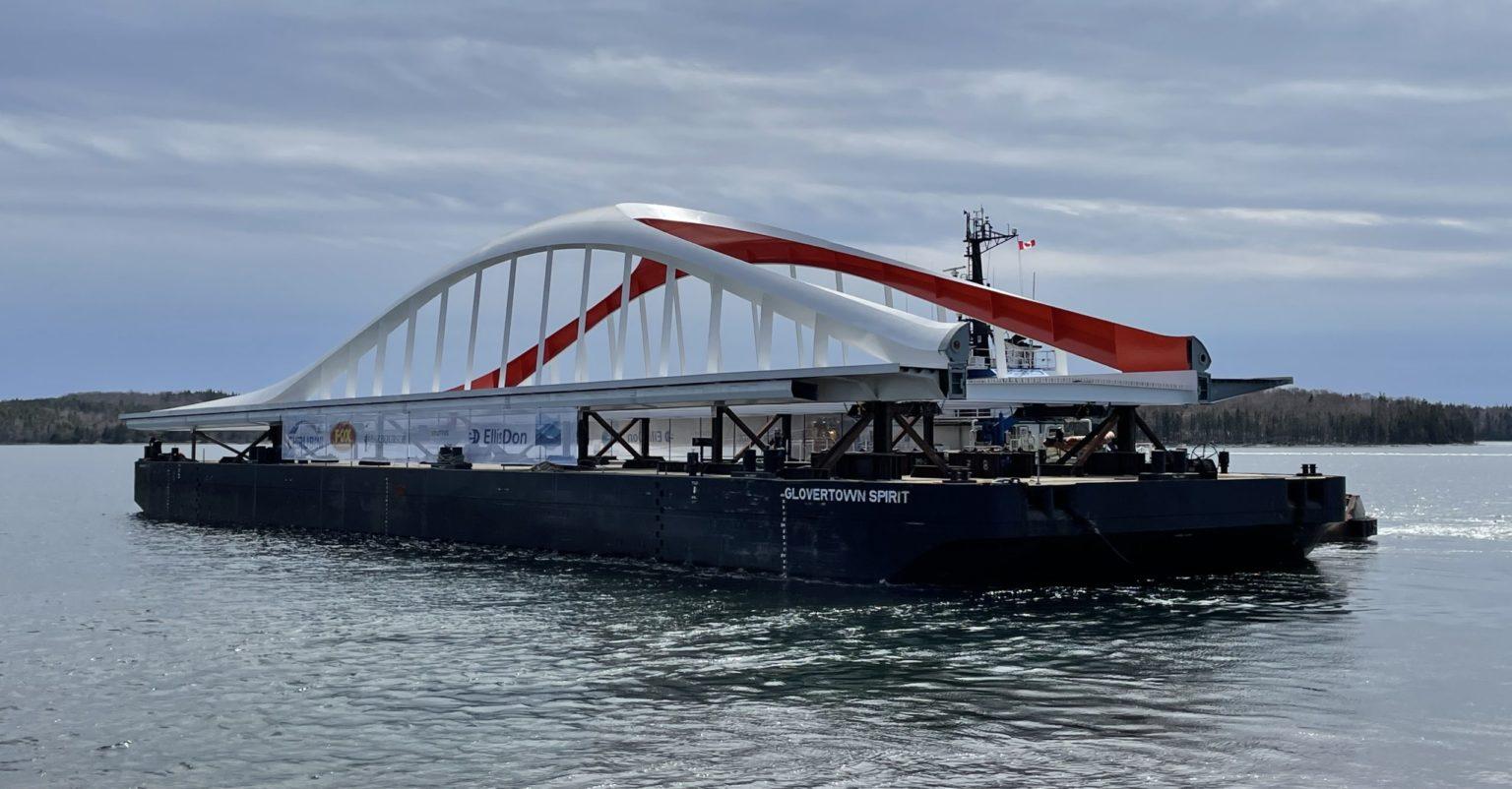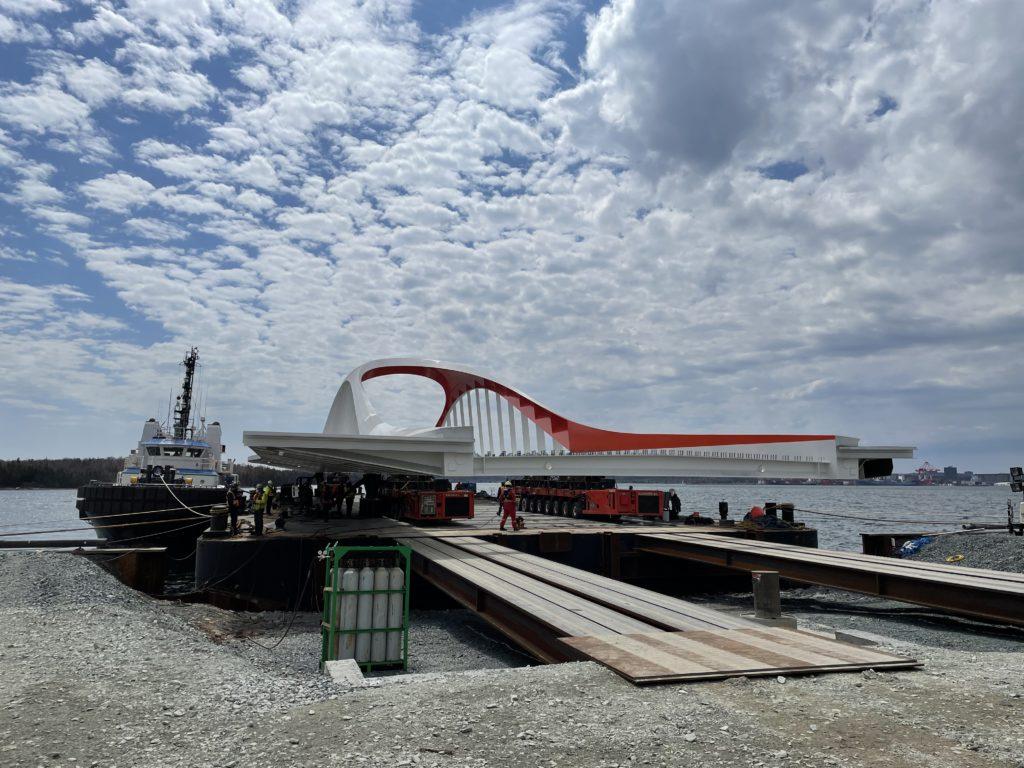
Massive span leaves Nova Scotia on barge trip to Toronto
It was no easy feat. At 260-feet long, and weighing as much as 16 fully-loaded transport trucks, the massive cargo required a team of 20 surveyors, welders, engineers, tug crew and logistics specialists to ensure it was safely and securely loaded onto the Glovertown Spirit barge.
The first section of the Commissioners Street bridge, to be installed as a vehicular and pedestrian bridge over the new Don River in Toronto, set sail aboard the tug and barge from fabricators, Cherubini Metal Works’ facility at Dartmouth, Nova Scotia earlier this week.
Shipwatchers are following its journey as the Lois M tug and Glovertown Spirit make their way with their striking cargo through the world’s longest inland navigation system, the Great Lakes-St. Lawrence River Waterway, to Toronto.
The western half of the bridge is one of two pieces, the second of which will be delivered in August – and is part of a major project by Waterfront Toronto that includes building four bridges to connect downtown Toronto to Villiers Island community. The first LRT bridge was delivered by barge in the fall of 2020 and the other bridges are expected to be brought to Toronto by the end of this year.
“This is a very high-profile job. It requires the right pieces of equipment, the right crew and shore personnel to make it happen,“ says Paulo Pessoa, Vice-President of Commercial for McKeil Marine, the Burlington-based company in charge of the marine transport. “The amount of engineering that goes into a logistical project like this is insane from the load out of the bridge onto the barge in tidal waters, to the deck strength of the barge that is required to support this kind of structure. We’re very proud of all of the team involved.”

Chris Kirby, who previously worked at McKeil and is now managing the project through his company Lani Maritime, says discussions around marine transport started three years ago.
“Cherubini knew about some of the requirements of moving cargo through the St. Lawrence Seaway but they wanted to find out more specifics about how we could accommodate the bridge on a barge. Later, McKeil bid for the project and won the contract. A huge amount of planning goes into a project like this.”
Kirby explains that Cherubini has its own fabrication location directly in Dartmouth about a 500-feet walk to the wharf. The bridge was far too heavy to use cranes, so the marine transport team used two self-propelled module transporters on either end of the bridge and extensive ramps to move the bridge from the wharf to the barge. The biggest challenge was to keep the bridge level with the barge as it rolled on in tidal waters. “You have to look at what the tide is doing that day,” he says, adding that the barge had to slowly de-ballast to accommodate the tide as the weight of the bridge shifted to the barge.
Kirby adds that having the Great Lakes-St. Lawrence inland navigation system and the barge infrastructure in place to move massive cargoes of this scale is a great advantage for the customer.
“You just can’t move something like this by truck or rail. To be able to move these bridges directly from the fabricator’s facility here in Nova Scotia by marine all the way to its destination in Toronto – gives the customer more choices. Otherwise, you would have to occupy other lands in the port, warehouse facilities, have a mobile team there to fabricate the bridges on site in Toronto.”